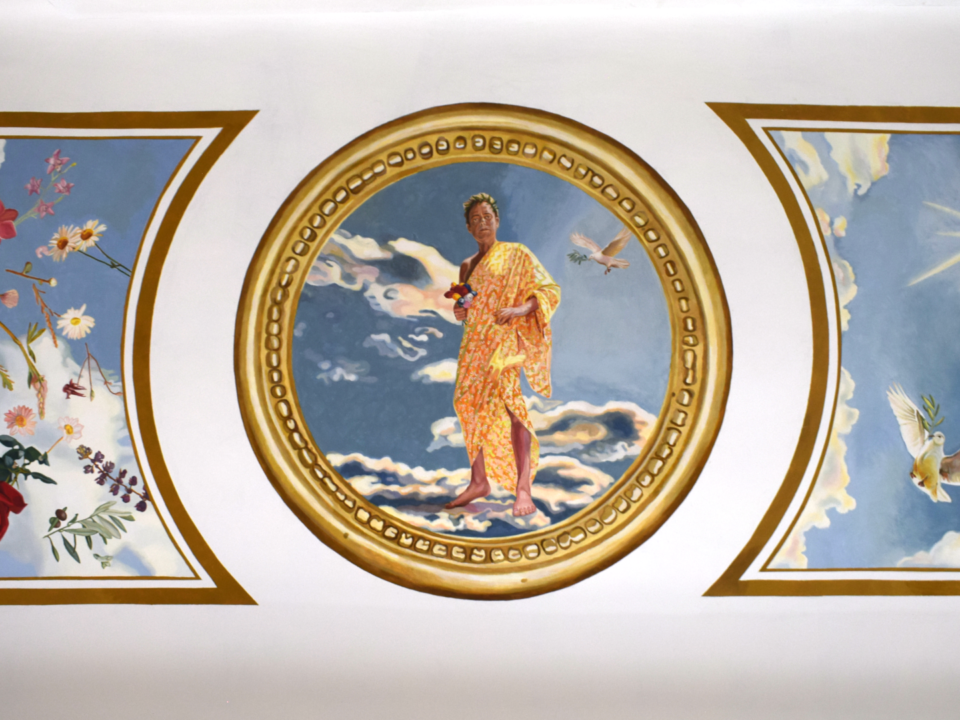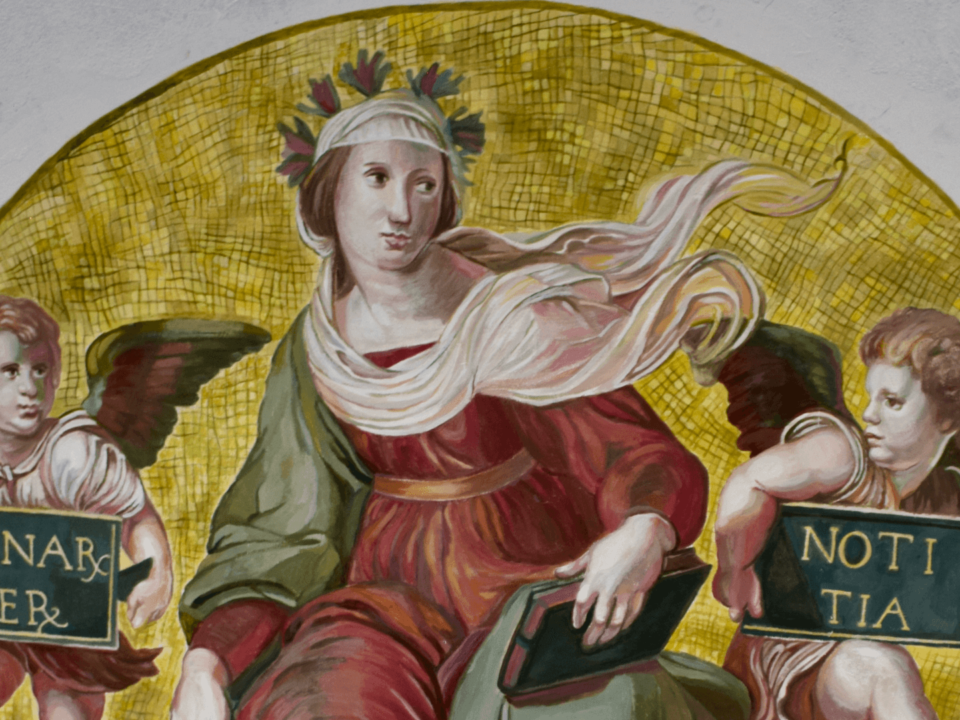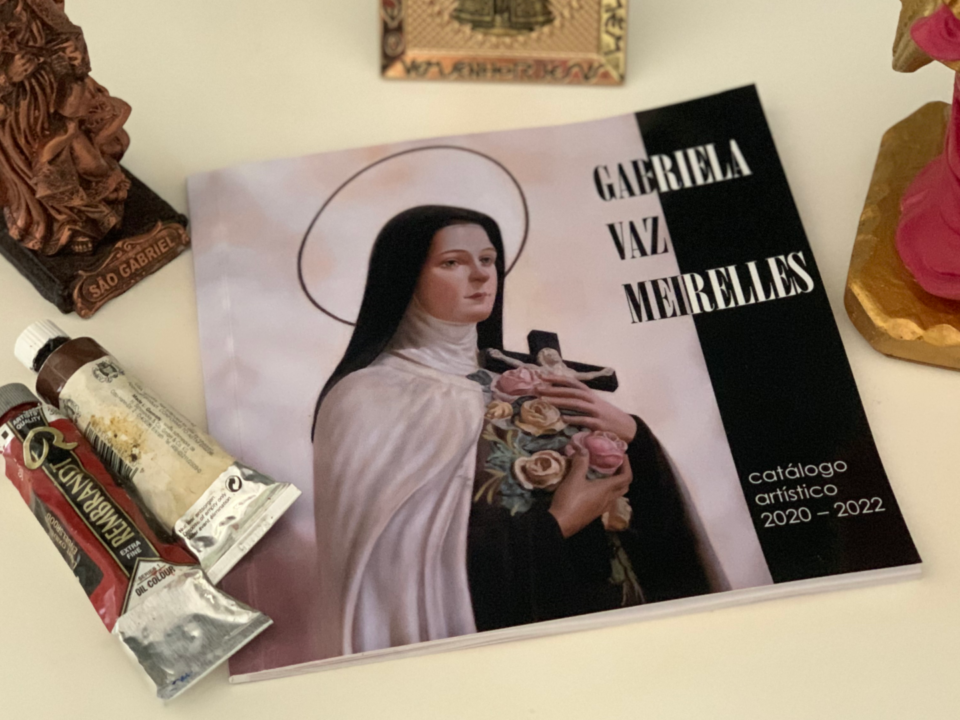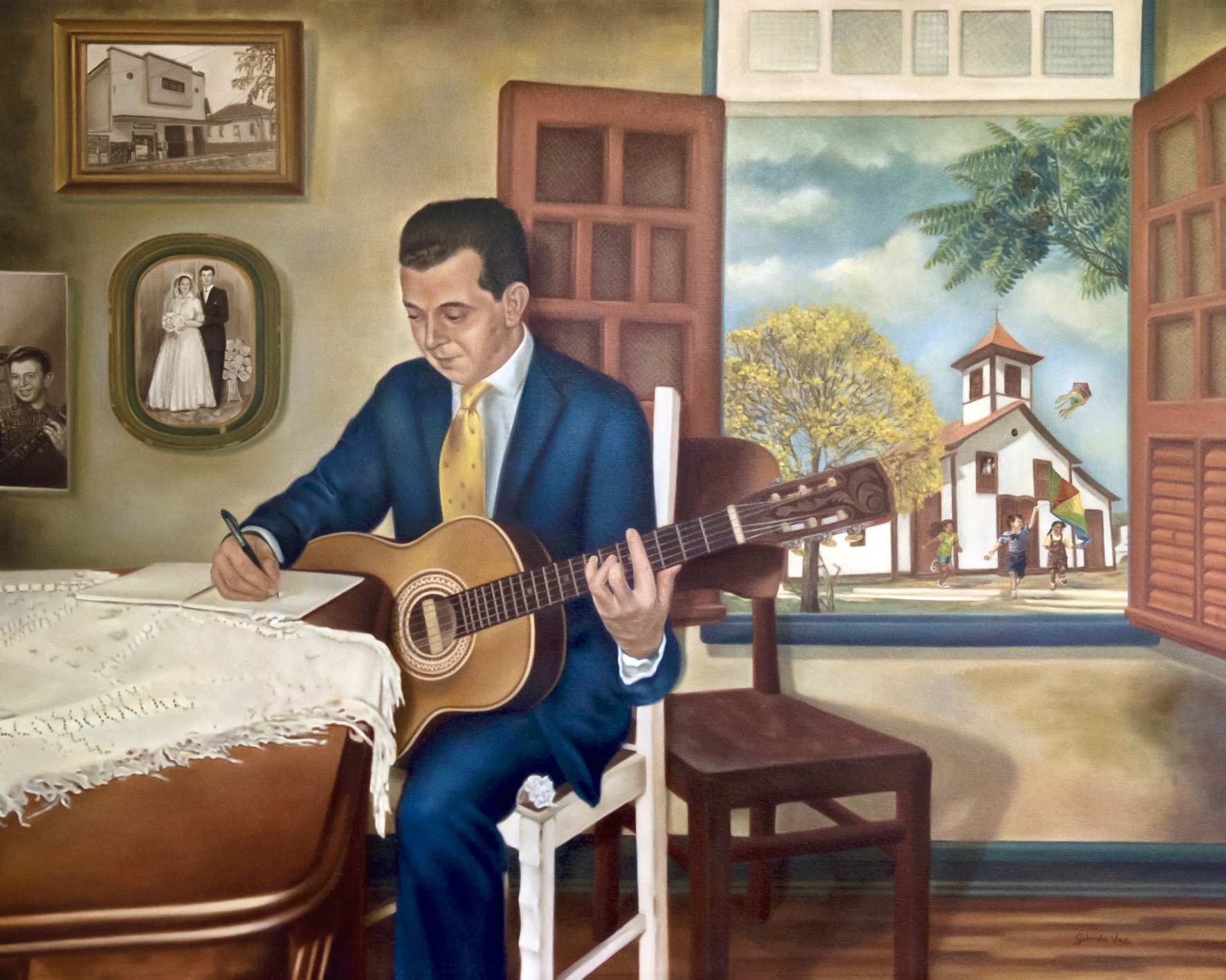
Gabriela Vaz Meirelles, Goiá, oil on canvas, 120 x 150 cm, 2022
History Background
Gérson Coutinho da Silva, better known as Goiá, was a Brazilian composer, singer and broadcaster, author of about 250 songs from the authentic country music repertoire. He was born in Coromandel, on January 11, 1935, and since he was a little boy, he liked to recite.
He was the son of Celso Coutinho da Silveira, but when he was registered they changed his surname to “Silva” and that was it. When he was still a little boy, his father soon noticed his son's talent, who already recited verses and hummed the songs he heard. Enthusiastically, he gave the boy a harmonica when he was 4 years old. Soon after, he gave him a cavaquinho and, finally, a guitar.
He studied music with the conductor of the local band, José Ferreira, but he always liked poetry. While still in elementary school, Gerson became an attraction. He began to play at parties with friends and at festivals in the city, such as the agricultural fair. Over the years, he partnered with older singers and was requested by radio stations in the region, especially in Patos de Minas, for live performances.
When he was 18, he went with his father to Goiânia, in search of opportunities for artists. They had as a reference Zé Micuim, an experienced radio broadcaster in the country circles, and he soon got him a job at a radio station. Gerson adopted the name of “Rouxinol” and went on to form the “Trio da Amizade”, in the company of his godfather Zé Micuim and an accordionist named Goianinho. During the two years that they lived in Goiânia, the trio participated in a daily program on the famous Rádio Brasil Central. Goiá and the components of this trio were the first in Goiás to record 2 albums in São Paulo.
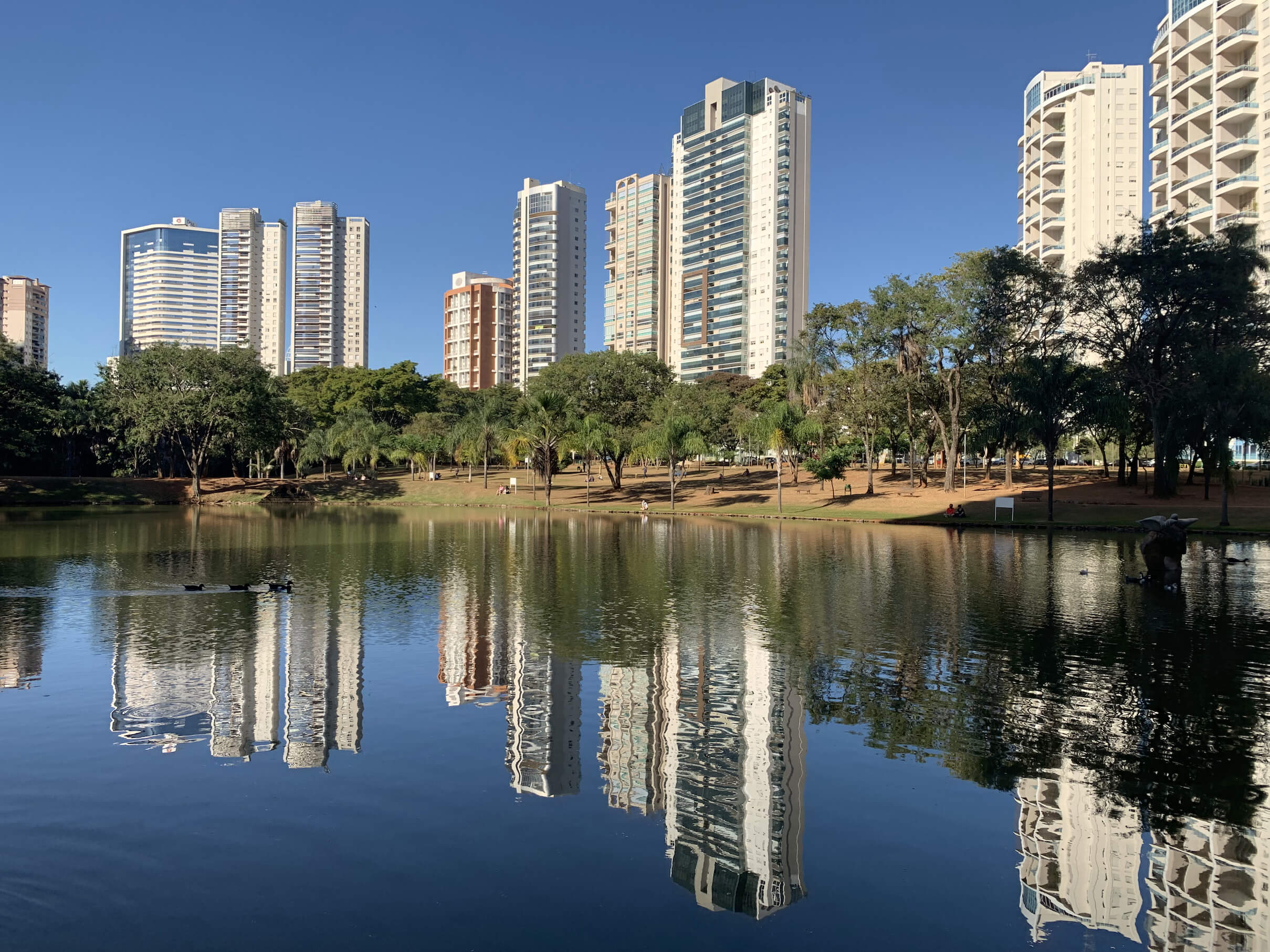
Goiânia, Brazil
During these trips to São Paulo, Gerson “Rouxinol” came to be called Goiá, in reference to Goiás, and the nickname stuck. But the trips paid off more, because the people from the CBS record company liked his songs and offered him a job on a radio station in São Paulo, which was what he most wanted in life. He accepted the invitation and moved there on December 31, 1955. In São Paulo, he worked for a few months at Rádio Nacional, but was called by Rádio Bandeirantes, which gave him greater projection. He started to circulate in the country music circles of São Paulo, with the same ease as in Goiânia, only that everything was “very amplified” there, as he said in one of the rare interviews he gave in his life.
He researched and studied a lot from a young age. One of the friends he had left in Goiânia was the historian Bariani Ortêncio, with whom he talked about the most diverse subjects. Once, Ortêncio went to São Paulo to visit him, taking as a gift the book “Sertão Sem Fim”, which he had just published. In gratitude, Goiá composed the song “Saudade de Goiás”, in which he cites the intellectual from Goiás by name.

São Paulo, Brazil
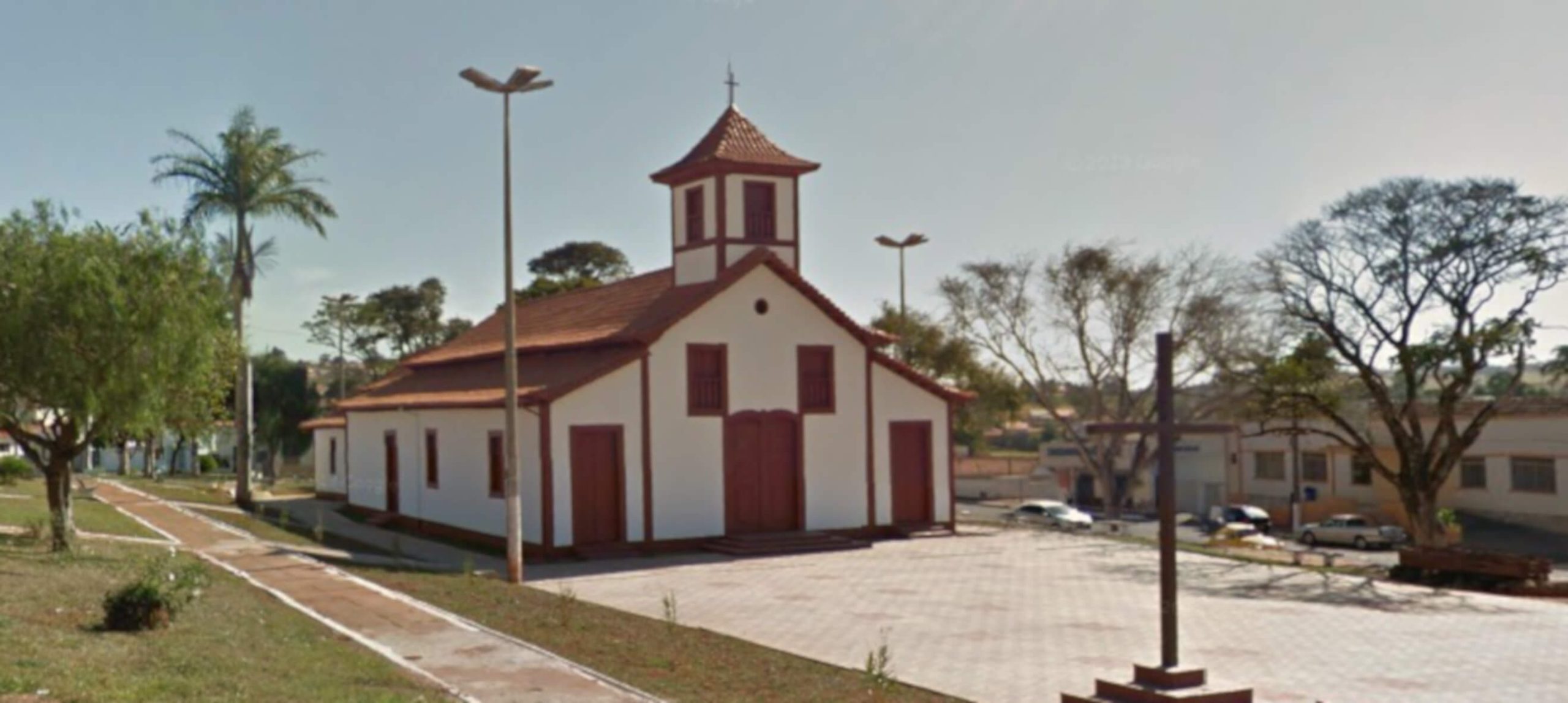
Igreja Matriz de Sant'Ana, Coromandel, Brazil
He dreamed of returning one day to Coró, as Coromandel is affectionately called. And sang his city in many of his songs. He spoke about the people he had left there, the natural beauties and historical, social and economic aspects, such as mines and prospectors, as the main diamond mines in Brazil are located there.
His different beat on the guitar and especially the poetics of his verses drew a lot of attention. They were well-crafted lyrics, with a vocabulary that was out of the ordinary in the country music of the time, and verses that touched the depths of those who had left something behind in life. Saudade, remembrance, loneliness, nostalgia and melancholy are common words in his lyrics.
He was part of the cast of several radio stations and his compositions were recorded by several interpreters, among them, Pedro Bento and Zé da Estrada, Irmãs Galvão, Zilo and Zalo, Caçula and Marinheiro, Tibagi and Miltinho, Primas Miranda, Belmonte and Amaraí, Celia and Celma, Milionário and José Rico, Sérgio Reis, Almir Sater, Liu and Leo, Chitãozinho and Chororó, Clayton Aguiar, and many others. One of his biggest hits was "Saudade de Minha Terra", made in partnership with Pascoal Todarelli, known as Belmonte, and initially recorded by Belmonte and Amaraí. And there comes an interesting aspect of the poet-composer's personality. When he wasn't in a broadcasting studio or at concerts, Goiá would stop at some pub, with the guitar in hand, a pen by his side, and many glasses of cachaça and beer, his favorite drinks. In these rounds, it happened that someone asked for a partnership or even the entire authorship of some composition, which he generously gave.
Goiá married Hilda Alves da Silva in 1957 and they had a son and two daughters. He died in January 1981, when he turned 46, in a hospital in Uberaba, where he was treating liver cirrhosis.
In 2006, the singer Sérgio Reis released the CD "Tributo a Goiá", a tribute to the composer. Two biographies were written about Goiá, “The Poet Goiá”, by Lúcio Rodrigues Flores, and “Negotiations of a seducer”, by Diogo de Souza e Brito, edited by the Federal University of Uberlândia and awarded in 2010 with the Funarte Prize for Critical Production in Music, from the Ministry of Culture.

Cover of the book "The Poet Goiá" by Lúcio Rodrigues Flores

Cover of the book "Negotiations of a seducer” by Diogo de Souza e Brito
The Composition
At the end of 2021, Gabriela was commissioned a painting that portrayed the musician Goiá, with some specific elements from his homeland, Coromandel. She was very happy with the opportunity to depict the composer's talent and life through a large painting. Therefore, Gabriela developed the composition based on some photos of the time, trying to represent a moment in which the musician focused on writing one of his songs in his living room, with pictures on the wall that portrayed important moments in his life, such as his wedding, the city's cinema and the “Trio Mineiro”, observing through the window the memories of the church where he was married and baptized, Igreja Matriz de Sant'Ana, and his favorite trees, ipê (Tabebuia) and cedar. Goiá was very attached to nature and, before he died, he asked for a cedar to be planted next to his grave, which was done.

Goiá writing a song
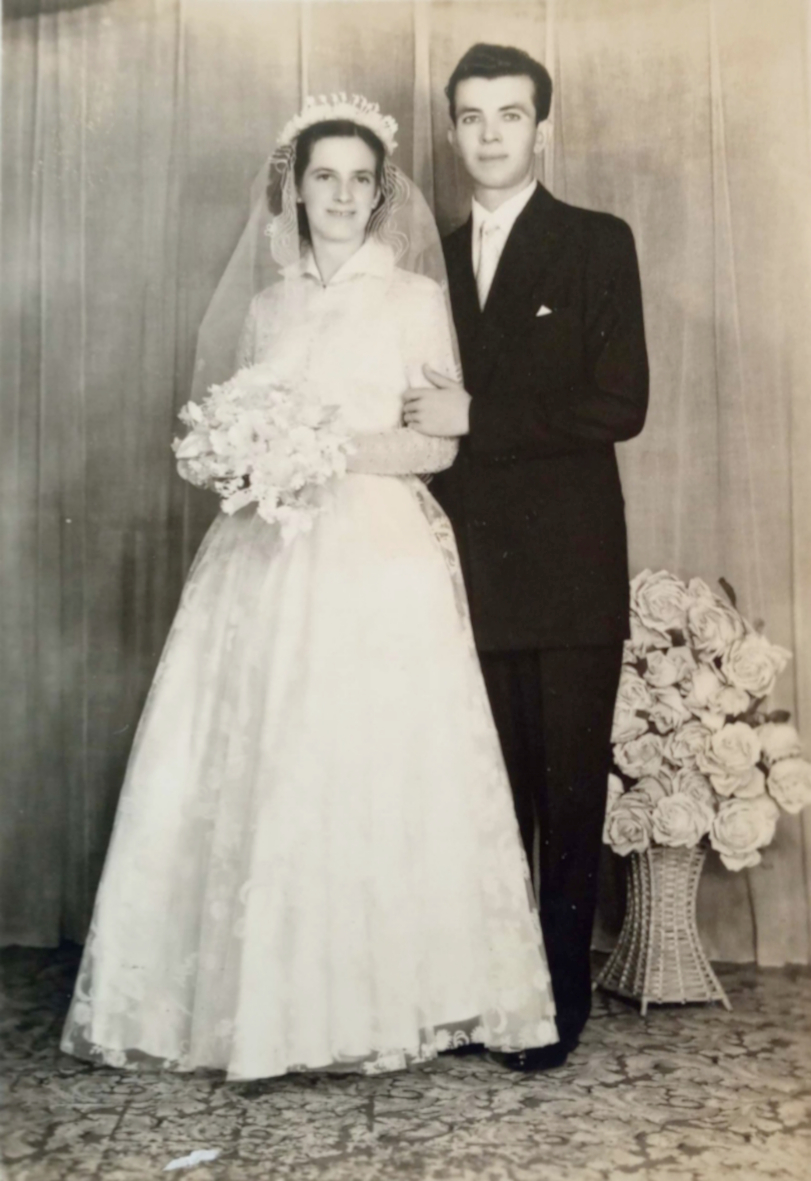
Goiá's wedding with Hilda
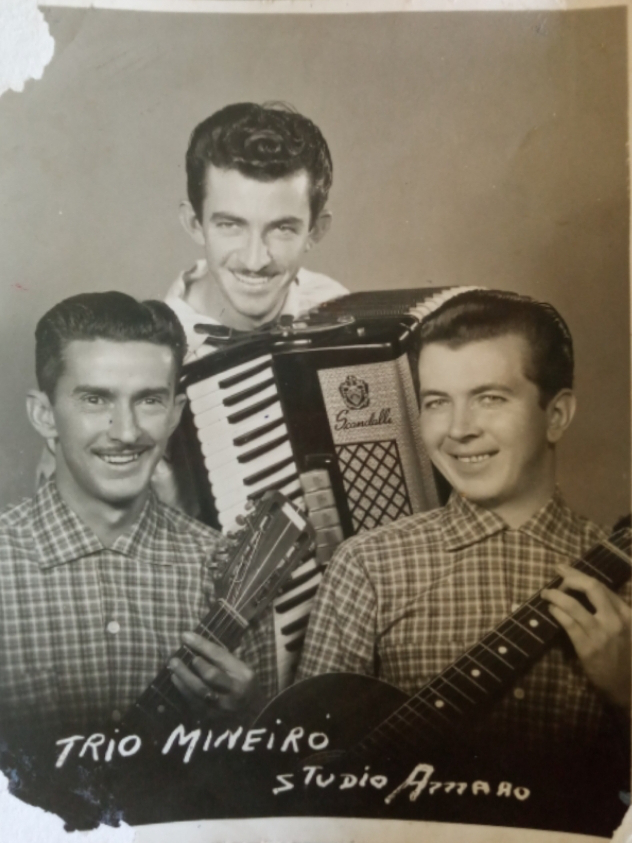
Trio Mineiro

Coromandel's cinema
The Painting Process
Gabriela developed the painting of Goiá following the Old Masters technique. In order to start the painting, she used a stretched fine prepared cotton canvas measuring 120 x 150 cm and applied to its surface a cold medium gray color using a palette knife, in order to balance the high value of the white canvas. For the underdrawing layer, Gabriela transferred the composition to the surface of the primed canvas using a burnt umber color. In the next day, she did a warm grisaille layer using a mixture of transparent brown oxide and natural raw umber. She then applied successive dead layers of a mixture of white and natural raw umber to adjust the form and tone of the face and hands of Goiá. For the color underpainting layer, she applied broad fields of color in the major areas and turned to the smaller ones using smaller brushes. She worked gradually, day after day, returning to most areas several times to add depth and details after allowing previous coats of color to partially dry. Finally, she did the glazing stage using very thin layers of transparent colors and let the painting dry.
At the House of Culture of Coromandel
On September 7, 2022, the painting was donated by its owner, José Umberto, to the House of Culture of Coromandel, during the inauguration of the new Gallery of Mayors, the exhibition “Coromandel in 99 photos” and the presentation of the National Anthem and the recording of the Centenary Anthem of Coromandel, in commemoration of the city's 99th anniversary and the Bicentennial of Independence.
The opening of the exhibition and unveiling of the painting was carried out by the mayor of Coromandel, Fernando Breno, and by Goiá's brother, Nelson Coutinho da Silveira.
It was an honor for Gabriela to work on the composition and painting of such a great Brazilian poet and musician, who transformed, with his simplicity and talent, the country music scene in Brazil.
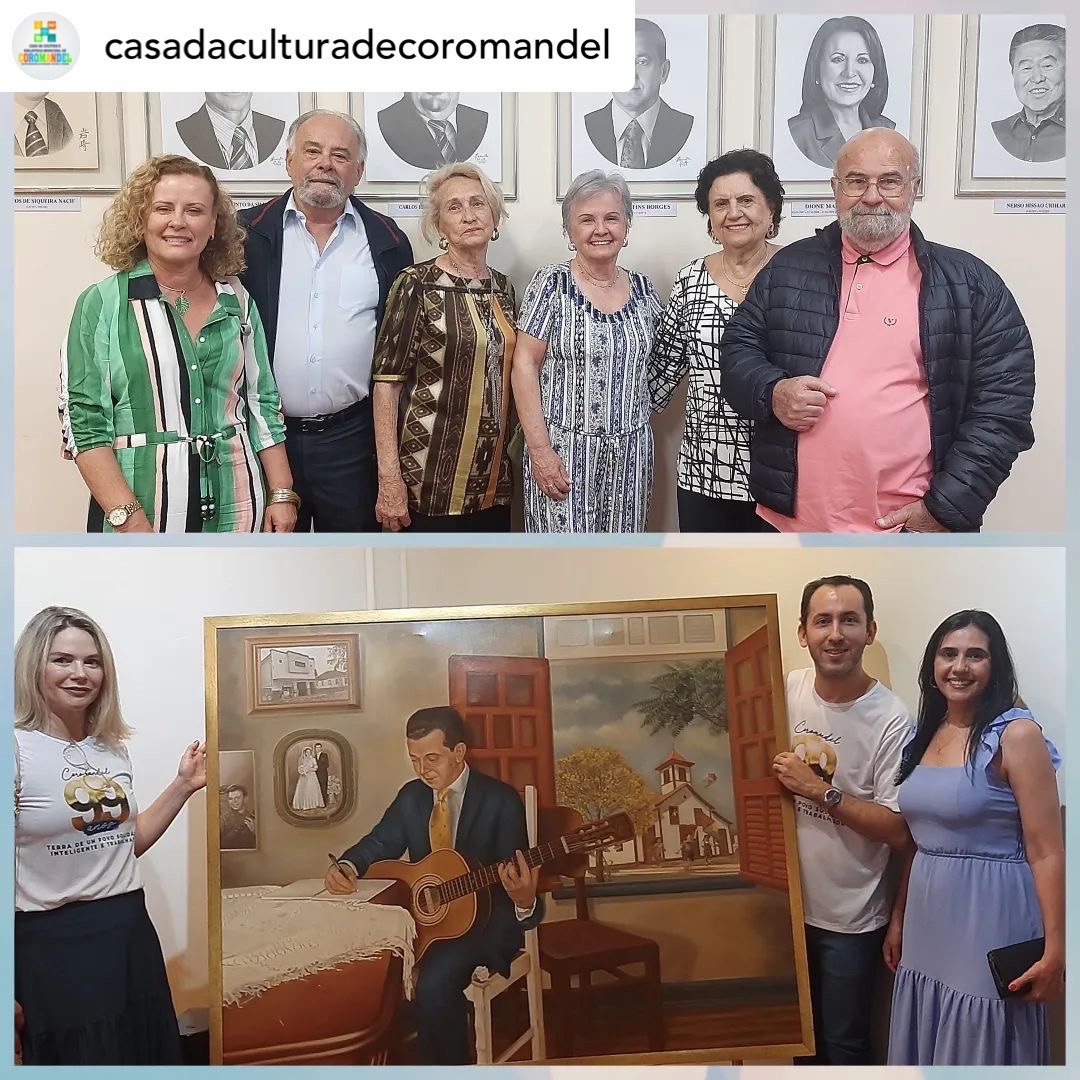
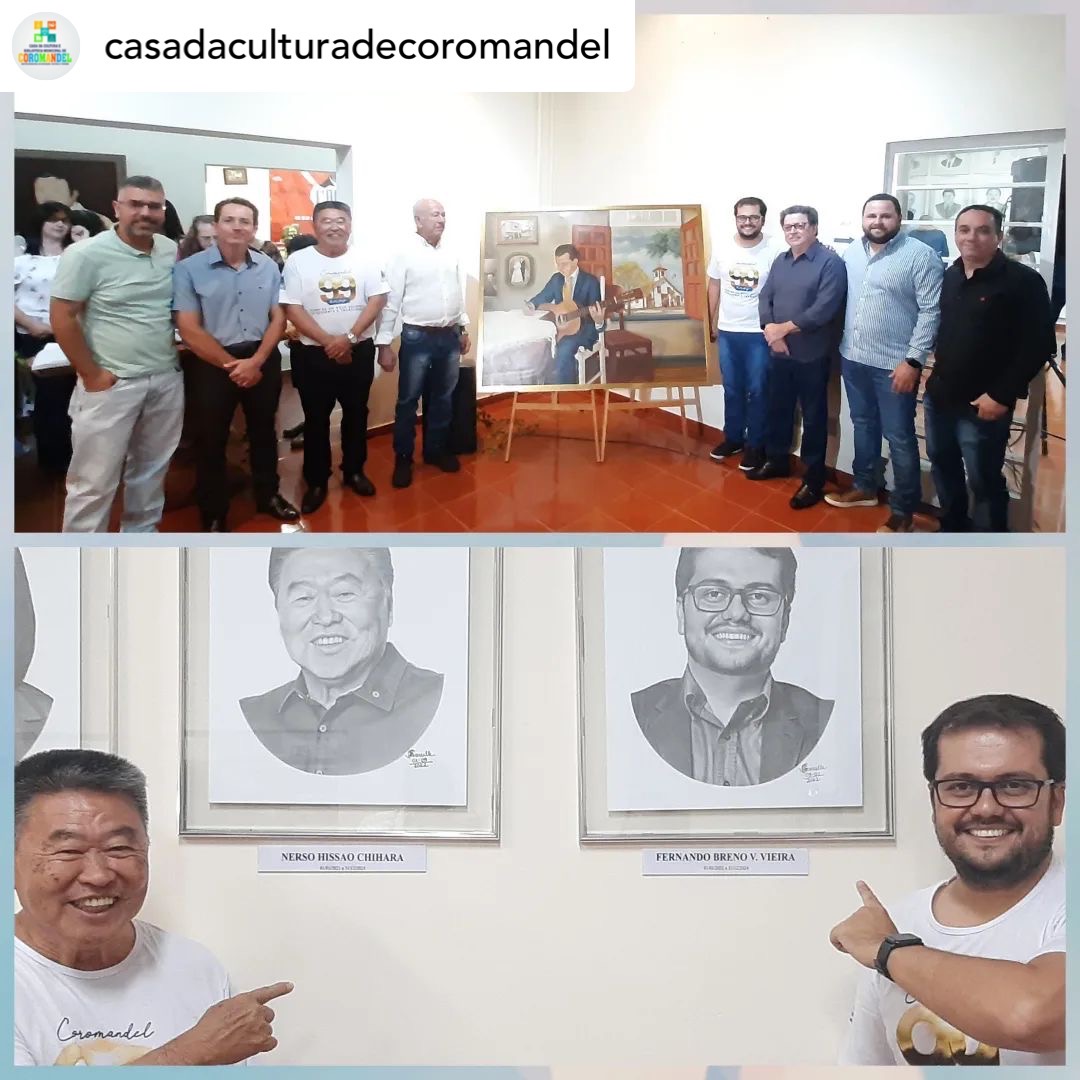
References
Gérson Coutinho da Silva. In Wikipedia. Available at: https://pt.wikipedia.org/wiki/G%C3%A9rson_Coutinho_da_Silva
Goiá. Recanto Caipira, 2008. Available at: https://www.recantocaipira.com.br/duplas/goia/goia.html
FLORES, L. R. O Poeta Goiá.
BRITO, D. S. Negociações de um sedutor: trajetória e obra do compositor Goiá no meio artístico sertanejo. Uberlândia: Edufu, 2010.

